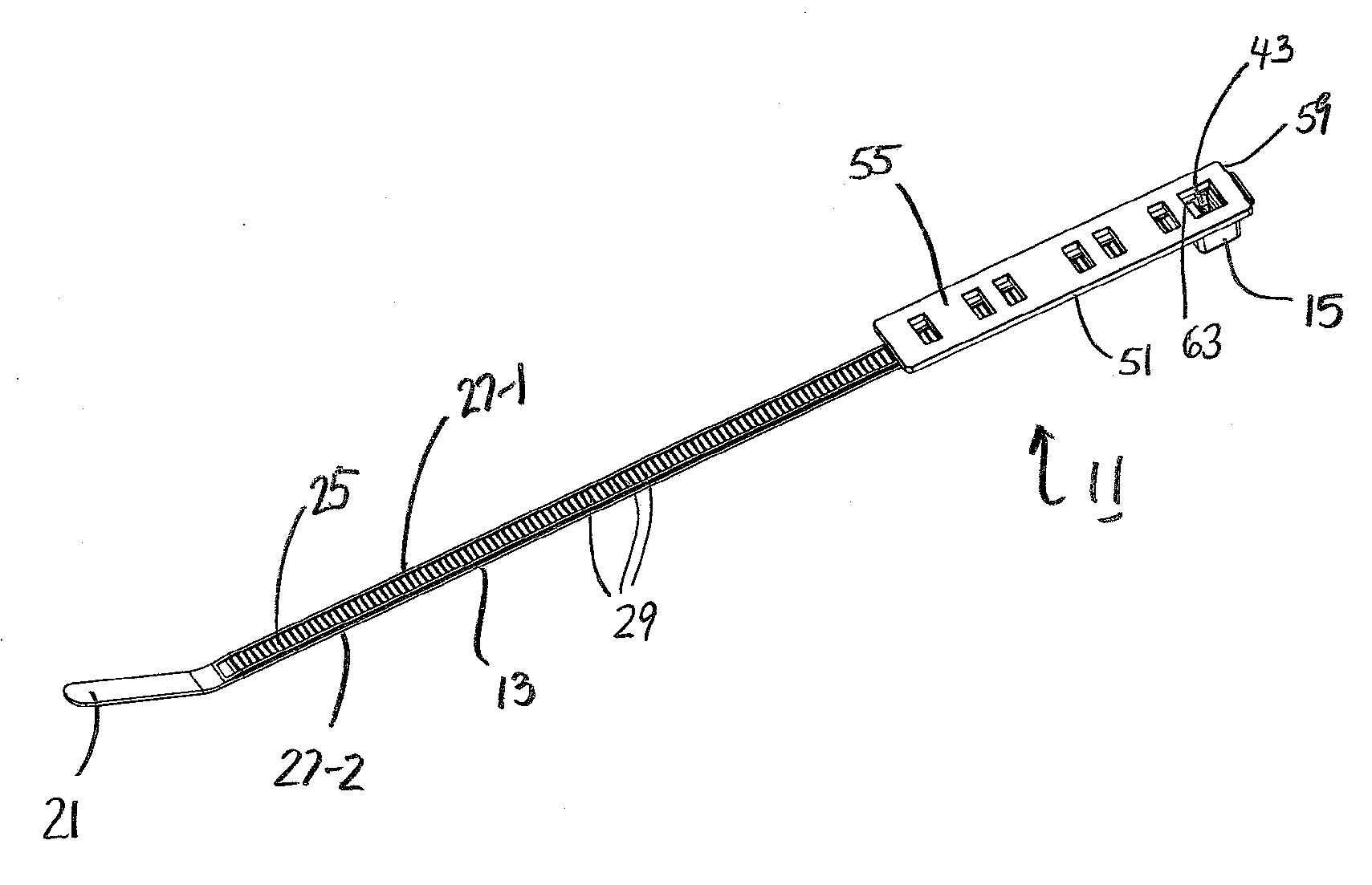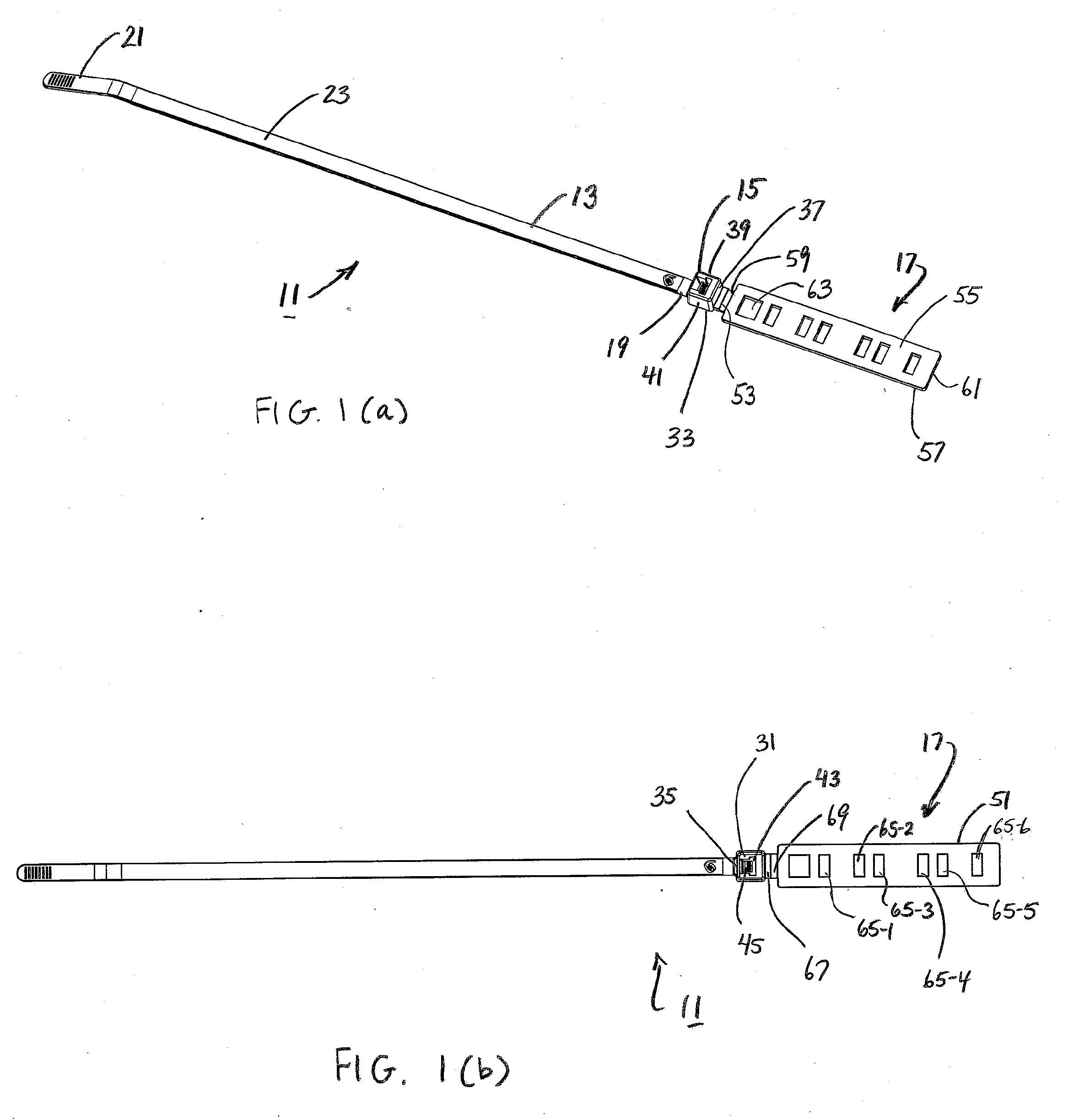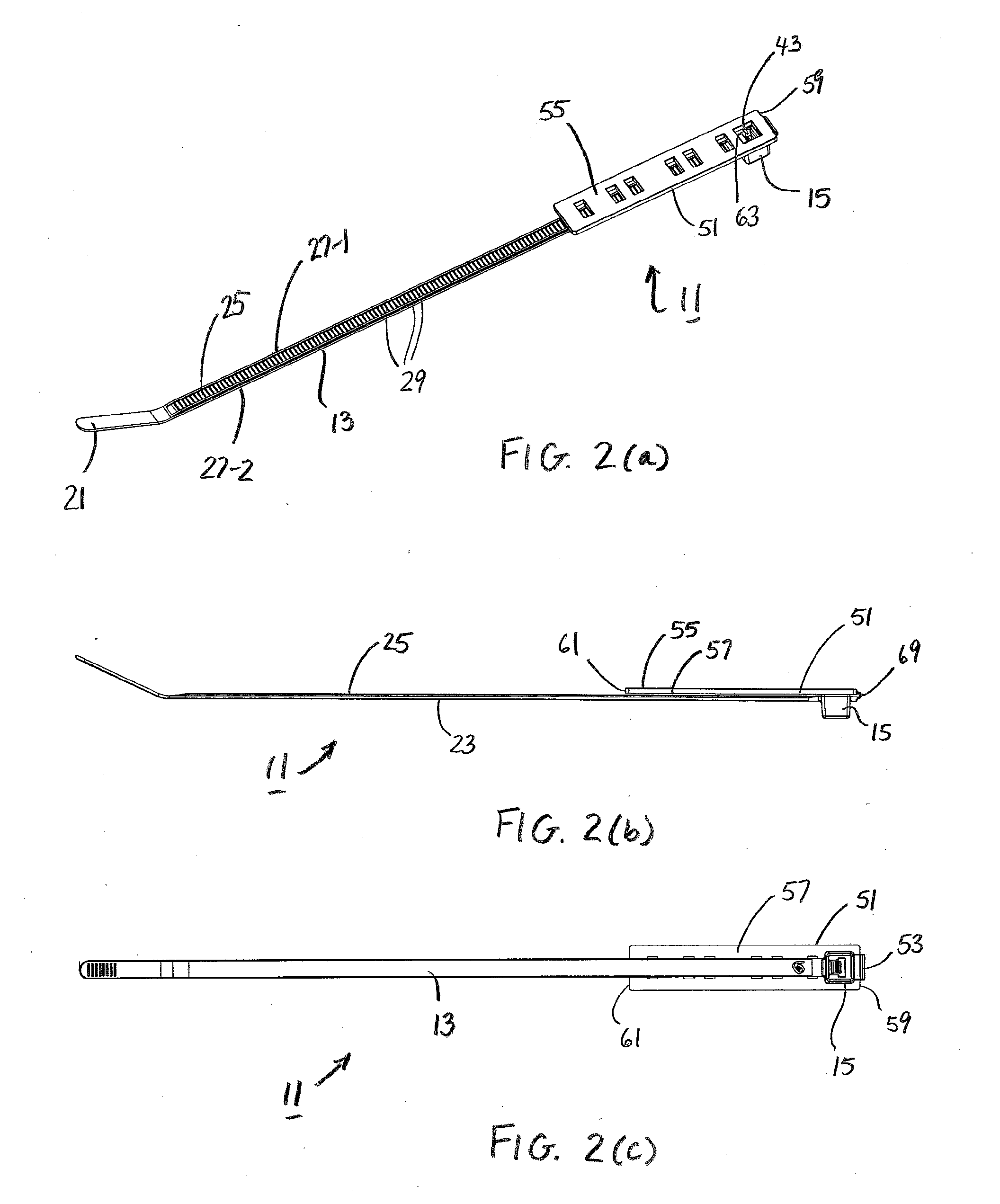Cable tie with support member
- Summary
- Abstract
- Description
- Claims
- Application Information
AI Technical Summary
Benefits of technology
Problems solved by technology
Method used
Image
Examples
Embodiment Construction
[0022]Referring now to FIGS. 1(a)-2(c), there is shown a cable tie constructed according to the teachings of the present invention, the cable tie being identified generally by reference numeral 11. In use, cable tie 11 can be formed in a closed loop configuration in order to, inter alia, secure an article of commerce to its corresponding packaging. As will be explained further in detail below, cable tie 11 is specifically designed to disperse the retentive force applied to the packaging across a broader region of contact, thereby enabling the packaging to absorb the retentive forces without tearing, which is a principal object of the present invention.
[0023]Cable tie 11 is a unitary member that comprises an elongated strap 13, a locking head 15 formed onto one end of elongated strap 13, and a support member 17 formed onto locking head 15. As will be described in detail below, support member 17 provides structural reinforcement to the packaging to which cable tie 11 is secured and th...
PUM
 Login to View More
Login to View More Abstract
Description
Claims
Application Information
 Login to View More
Login to View More - R&D
- Intellectual Property
- Life Sciences
- Materials
- Tech Scout
- Unparalleled Data Quality
- Higher Quality Content
- 60% Fewer Hallucinations
Browse by: Latest US Patents, China's latest patents, Technical Efficacy Thesaurus, Application Domain, Technology Topic, Popular Technical Reports.
© 2025 PatSnap. All rights reserved.Legal|Privacy policy|Modern Slavery Act Transparency Statement|Sitemap|About US| Contact US: help@patsnap.com



